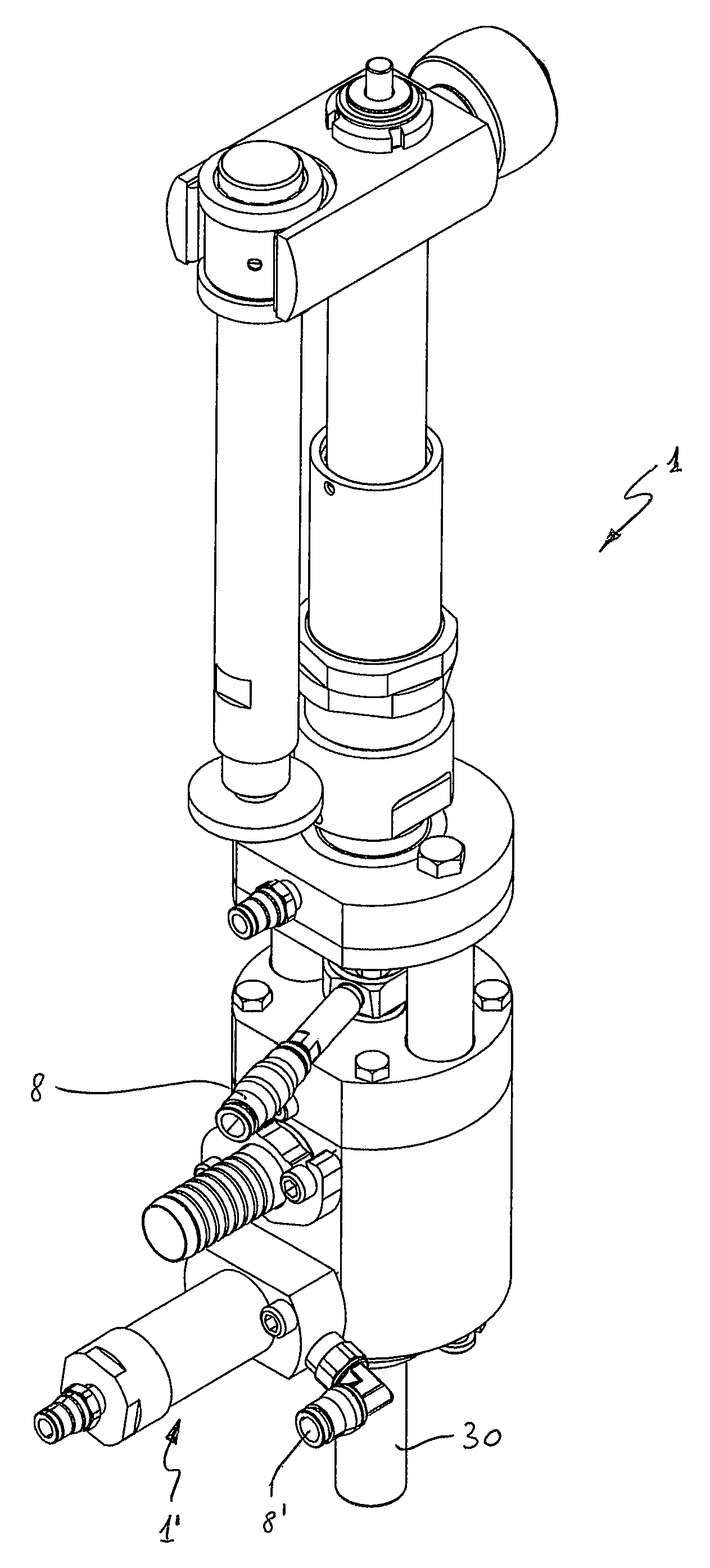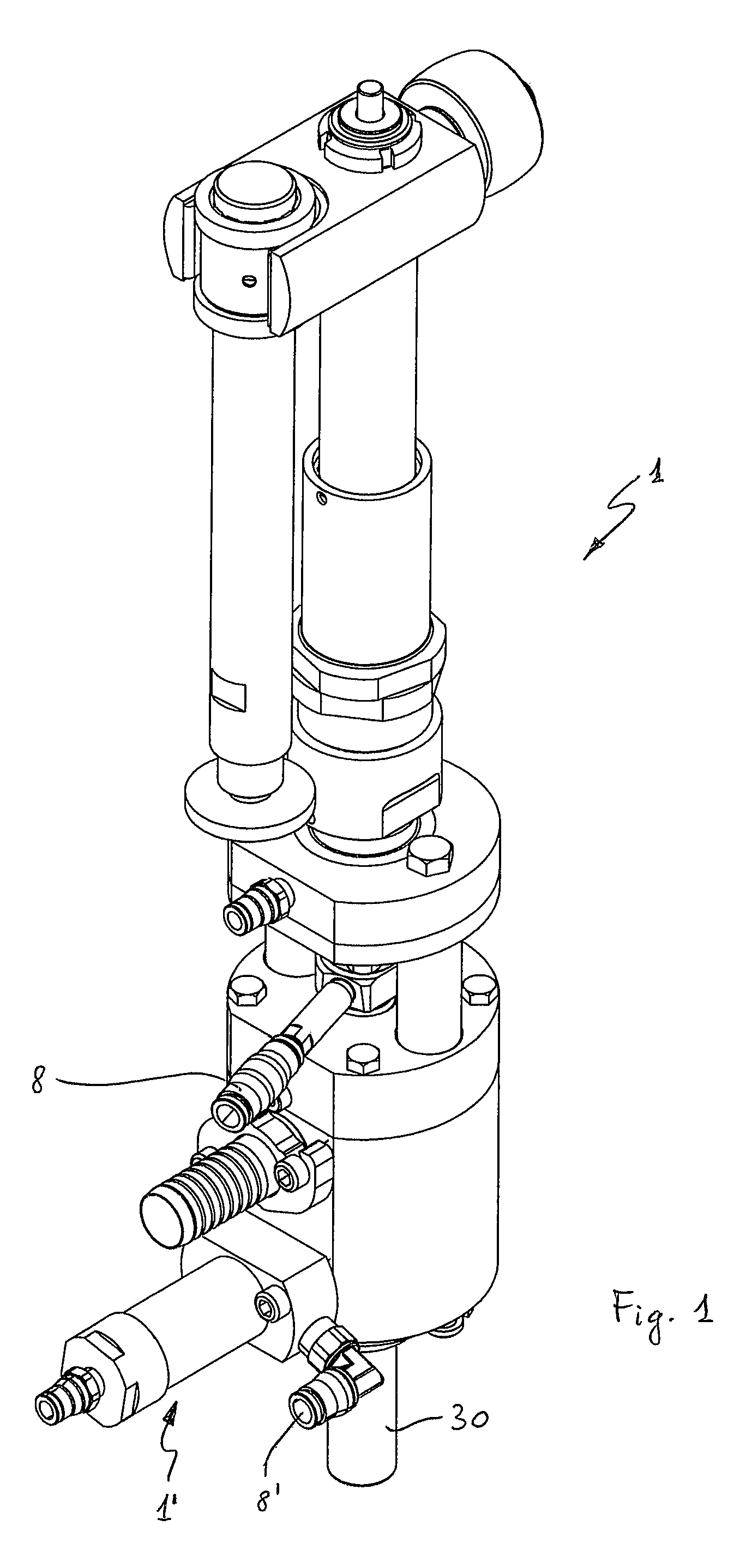Hot filling system for bottles
a filling system and bottle technology, applied in the direction of filling without pressure, liquid handling, packaging goods, etc., can solve the problems of unfavorable thermal treatment cycle effectiveness, foam formation, and undesired level drop
- Summary
- Abstract
- Description
- Claims
- Application Information
AI Technical Summary
Benefits of technology
Problems solved by technology
Method used
Image
Examples
first embodiment
[0073]In a first embodiment, the conical configuration of the swirler 6 inside a conical, frustoconical or frustoconocal-cylindrical hole, i.e. constituted by a first frustoconical part followed in the vertical direction by a second cylindrical part (FIG. 5), allows to increase the available passage section for the product when the main shutter 4 of the valve opens, thus minimizing the likelihood of obstruction due to the passage of pulps contained in the liquid.
second embodiment
[0074]In a second embodiment, the cylindrical configuration of the swirler 6 inside a cylindrical hole (FIG. 6) is useful in that the swirler may be disassembled from the valve by removing it from the bottom, by simply unscrewing the tubular element or beak 17 on which it is mounted. In the case of clear products, this allows to mount a beak with a traditional deflector, if the machine needs to also process cold products at a higher output speed, provided that the product level in the bottle allows this circumstance.
third embodiment
[0075]In a third embodiment, the conical configuration of the swirler 6 inside a cylindrical hole (FIG. 6d) has the same advantage of the cylindrical configuration of the swirler inside a cylindrical hole, with the further advantage of reducing to minimum the likelihood of jamming because pulps or filaments that are stuck can free themselves more easily.
[0076]Furthermore, the position of the swirler directly in contact with the lower end of shutter 4 above avoid pulps, cells or filaments from remaining astride the crests of the helixes, finding no horizontal surface with which to get caught. While maintaining the efficiency of the systems traditionally applied to the filling of clear juices, the aforesaid conformation of the deflection system advantageously allows beverages with a high content of pulps and filaments to pass through.
[0077]The helixes of swirler 6 are advantageously dimensioned so that the helical pipes 13 are such to pass pulps of maximum size contained in the produc...
PUM
| Property | Measurement | Unit |
|---|---|---|
| kinematic viscosity | aaaaa | aaaaa |
| internal diameter | aaaaa | aaaaa |
| internal diameter | aaaaa | aaaaa |
Abstract
Description
Claims
Application Information
 Login to view more
Login to view more - R&D Engineer
- R&D Manager
- IP Professional
- Industry Leading Data Capabilities
- Powerful AI technology
- Patent DNA Extraction
Browse by: Latest US Patents, China's latest patents, Technical Efficacy Thesaurus, Application Domain, Technology Topic.
© 2024 PatSnap. All rights reserved.Legal|Privacy policy|Modern Slavery Act Transparency Statement|Sitemap



